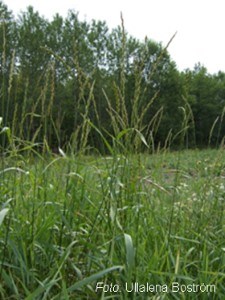Contact
hakan.fogelfors@slu.se, +46 18 67 1400, +46 70-34 43 980

Management by utilising plant competition and cutting
Project responsible: Håkan Fogelfors, Department of Crop Production Ecology, SLU.
Couchgrass (Elymus repens L., Gould) is overall one of the most important weeds in Sweden due to its pernicious underground runners. Couchgrass can be controlled mechanically by repeated soil tillage or with chemical herbicides. To reduce the risk of leaching of nitrogen, there is an environmental protection programme that promotes reduced soil tillage. This in combination with the lower cost of chemical weed control has meant that at the present time, couchgrass is often controlled using glyphosate.
Within organic farming, where chemical weed control is not permitted, there is a need for alternatives to soil tillage to reduce the leaching risk. Within conventional farming there is also a move to reduce the use of chemical herbicides, which means that there is a need for alternative weed control techniques. Concrete examples of situations where couchgrass control should be carried out in a different way are in catch crops in the autumn after harvest of the main crop, in green manure crops on organic farms, in water protection zones where crop protection chemicals are not permitted and in stubble fields in the autumn before spring ploughing.
The aim of this project is to investigate changes in weed population dynamics and particularly the extent to which couchgrass can be inhibited and/or eliminated with the help of cutting together with competing crops. Creeping thistle, another perennial weed species, can namely be successfully controlled through repeated cutting in combination with competition from the crop.
hakan.fogelfors@slu.se, +46 18 67 1400, +46 70-34 43 980